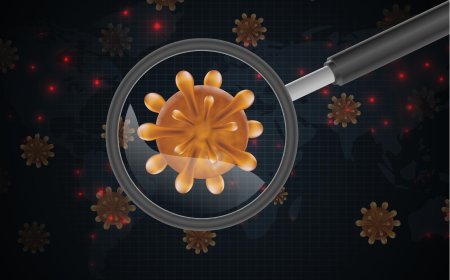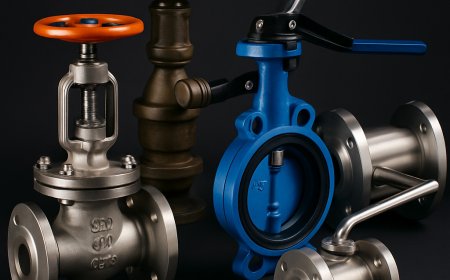The Power of Nitrogen: Why Urea Fertilizer Remains a Cornerstone in Crop Nutrition

Introduction
Fertilizer application is one of the most important factors influencing agricultural productivity in Pakistan. Among the different nutrient typesnitrogen, phosphorus, and potassiumnitrogen stands out as the key driver of plant growth, especially in crops like wheat, maize, and sugarcane. Urea, being the most concentrated nitrogen fertilizer available, plays a critical role in maximizing yield and ensuring food security.
In regions like Okara, where the soil is fertile but cropping intensity is high, balanced and timely fertilization becomes essential. This article explores the role of urea, its application, efficiency practices, and the evolving trends in its use in Pakistani agriculture.
Understanding Urea: Composition and Benefits
Urea (CO(NH?)?) contains 46% nitrogen, making it the most nitrogen-dense solid fertilizer available globally. Key benefits include:
-
Quick nitrogen release to support leaf and stem growth
-
Cost-effectiveness per kg of nutrient
-
Easy to handle, store, and transport
-
Suitable for all major field crops
When applied correctly, urea boosts photosynthesis, enhances grain filling, and improves crop appearance and market value.
Nitrogen's Role in Plants
Nitrogen is vital for:
-
Chlorophyll production
-
Amino acid formation (building blocks of protein)
-
Enzyme activity
-
Cell division and overall vegetative development
Without adequate nitrogen, plants exhibit yellowing (chlorosis), stunted growth, and poor productivity.
buy urea fertilizer in Okara is a frequent query among farmers preparing for seasonal sowing. As urea demand peaks before major crops like wheat and maize, knowing where and when to purchase itwhile avoiding substandard or overpriced suppliesis essential for economic and agronomic success.
When and How to Apply Urea
-
Timing: Best applied in splits to coincide with crop needs. For example:
-
Wheat: 1st dose at sowing, 2nd at tillering, 3rd at booting
-
Maize: 1st at knee-high stage, 2nd at tasseling
-
-
Placement:
-
Broadcast or banded near the root zone
-
Avoid surface application just before rain
-
-
Incorporation:
-
Light irrigation post-application enhances uptake and reduces volatilization losses
-
Losses and Efficiency Challenges
Urea is prone to nitrogen losses through:
-
Ammonia volatilization (especially under hot, dry conditions)
-
Leaching in sandy soils after heavy irrigation or rainfall
-
Denitrification in waterlogged fields
To combat this, farmers are encouraged to:
-
Use urease inhibitors or coated formulations (like neem-coated urea)
-
Split the dose over two or three applications
-
Avoid application on very hot or windy days
Modern Trends in Urea Use
In response to sustainability concerns, many growers in Okara are moving towards:
-
Integrated Nutrient Management (INM): Combining urea with organic matter and micronutrients
-
Slow-release urea for extended availability
-
Fertigation systems in vegetable farming
-
Soil testing-based recommendations for precise dosage
These practices not only reduce losses but also improve input efficiency.
Ensuring Product Authenticity and Access
The market is flooded with both branded and unbranded products. Farmers must:
-
Buy from certified dealers only
-
Check for batch number, production, and expiry date
-
Avoid repackaged or unsealed bags
-
Ask for a receipt
The Government of Punjab has established digital tracking systems and hotline numbers for reporting fake or substandard fertilizer sales.
Urea Availability and Subsidies
To ensure affordability, the government often provides subsidies on urea through:
-
Kisan Cards
-
Agri Passbook Systems
-
District-level distribution through licensed outlets
However, timely distribution remains a challenge in peak seasons. Farmers should monitor local extension updates and build early relations with local input dealers to secure their supply.
Role of Dealers and Agri Cooperatives
Reliable dealers in Okara go beyond simple selling. Many offer:
-
Bulk discounts for group purchases
-
Credit facilities for smallholders
-
Guidance on dosage and timing
-
Access to micronutrient mixes and biostimulants to be used alongside urea
Some farming cooperatives also maintain fertilizer banks to prevent price exploitation during high-demand months.
Environmental Considerations
Excessive or poorly timed urea application contributes to:
-
Nitrate contamination in groundwater
-
Soil acidification
-
Reduced microbial diversity
Thus, awareness of 4R principles (Right source, Right rate, Right time, Right place) is being promoted by agri extension workers and research bodies.
Voices from the Fields of Okara
Farmers in areas like Hujra Shah Muqeem and Renala Khurd report improved wheat yields after adopting split application of urea with irrigation. One maize grower switched from broadcast to side-band application, saving 20% of the fertilizer without affecting yield.
Field schools and demo plots across Okara are actively demonstrating how precision use of nitrogen can transform productivity while saving costs.
Tools for Smarter Application
-
Leaf Color Charts (LCCs): Help determine nitrogen deficiency in rice
-
Soil nutrient kits: Allow basic analysis before sowing
-
Mobile apps: Guide on urea schedules based on crop and soil type
These low-cost tools are gaining popularity among progressive growers looking to modernize their practices.
Conclusion
Urea remains a fundamental input in Pakistani farming, especially in regions like Okara where cereal and fodder production is high. But as farming systems intensify, the key to ureas continued relevance lies in smart usage, certified sourcing, and awareness of its environmental impact. Farmers who plan ahead, source responsibly, and apply scientifically will gain the full benefit of this powerful nutrientensuring both yield and sustainability.






































